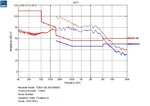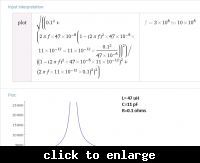T
treez
Guest
Hello,
Our direct drive 100W offline, non-isolated LED driver failed EMC as attached.
We need to re-test it ourselves.
Do you know the cheapest LISN and spectrum analyser that we can buy to repeat the test? Its too expensive to keep going back to the test house.
Our led driver is 86% efficient but is not SMPS based...its just led banks that get switched in and out as the mains rises and falls after the mains rectifier bridge.
The di/dt is very low.
We are amazed we have failed conducted emissions this badly.
Our direct drive 100W offline, non-isolated LED driver failed EMC as attached.
We need to re-test it ourselves.
Do you know the cheapest LISN and spectrum analyser that we can buy to repeat the test? Its too expensive to keep going back to the test house.
Our led driver is 86% efficient but is not SMPS based...its just led banks that get switched in and out as the mains rises and falls after the mains rectifier bridge.
The di/dt is very low.
We are amazed we have failed conducted emissions this badly.

